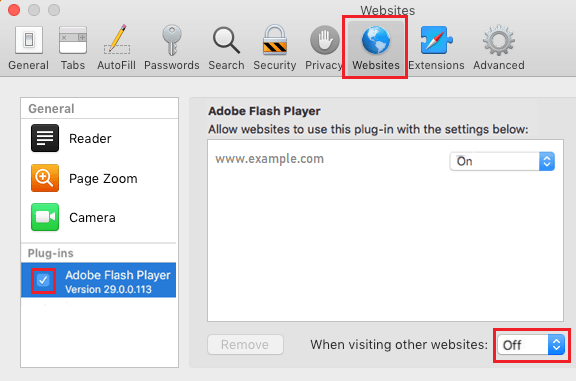Flash Player is integrated with Google Chrome as Pepper plug-in. Sometimes, it's necessary for developers to install the Content Debugger to debug their code. These instructions outline how to install and enable the Content Debugger.
Note:
Adobe® Flash® Player is a lightweight browser plug-in and rich Internet application runtime that delivers consistent and engaging user experiences, stunning audio/video playback, and exciting gameplay. Installed on more than 1.3 billion systems, Flash Player is the standard for delivering high-impact, rich Web content. For Mac OS X 10.10 or later. This computer will no longer receive Google Chrome updates because Mac OS X 10.6 - 10.9 are no longer supported. This computer will no longer receive Google Chrome.
If you have issues with integrated Flash Player plug-in in Chrome, report the issue to Google.
Go to https://www.adobe.com/support/flashplayer/debug_downloads.html and download the Content Debugger installer for the OS in use (Mac OS or Windows).
If installing the Content Debugger for Mac OS, note the version number.
Proceed with installing Flash Player Content Debugger.
Chrome Mac Enable Flash Player
At the prompt, type the launch command in the following syntax:
<path to chrome app> --ppapi-flash-path=<path to PPAPI plugin> --ppapi-flash-version=<PPAPI Version Installed>
For example:
/Applications/Google Chrome.app/Contents/MacOS/Google Chrome --ppapi-flash-path=/Library/Internet Plug-Ins/PepperFlashPlayer/PepperFlashPlayer.plugin --ppapi-flash-version=19.0.0.185
To confirm that Chrome is using the Content Debugger, navigate to http://helpx.adobe.com/flash-player.html.
The results indicate that the debug version is in use:
Your system information Your Flash Version 19.0.0.185 (debug version) Your browser name Google Chrome (PPAPI) Your Operating System (OS) Macintosh (OSX)
In the address field, type the following and press enter: chrome://plugins
Click Details and scroll down to the Flash section.
Disable the integrated Pepper version by clicking Disable. The Location of the integrated version is in the Programs Files directory path.
To confirm Chrome is using the Content Debugger, launch Chrome and navigate to http://helpx.adobe.com/flash-player.html.
The results indicate that the debug version is in use:
Your system information Your Flash Version 19.0.0.185 (debug version) Your browser name Google Chrome (PPAPI) Your Operating System (OS) Windows (Windows 7)
© Westend61/Getty Images
- To enable Flash in Google Chrome, you'll need to manually allow it for every site you visit, or set it to 'Ask First' mode.
- Google Chrome automatically blocks Flash from running on every new site you visit, and will continue to do this until 2021.
- On December 31, 2020, Google Chrome will stop supporting Flash for good, and you'll have to use an older browser if you want to run Flash.
- Visit Business Insider's homepage for more stories.
Adobe Flash Player is going the way of the dodo. At the end of 2020, not only will most major web browsers no longer allow Flash, but Adobe itself will stop supporting the multimedia software.
Flash Player was once the foundation of the internet. Animations, browser games, advertisements, and even YouTube videos all once ran using Flash.
However, as the years went on, Flash began to fall out of favor.
The beginning of the end was when Google declared that Google Chrome would begin to block Flash by default on any page you visit on the web. This declaration is also probably the reason you're here.
Once 2021 hits, you won't be able to run Flash in Google Chrome at all. Until then, however, you can re-enable Flash by going through Chrome's Settings menu.
Here's how to do it in two ways, using the official Google Chrome app for Mac and PC.
Check out the products mentioned in this article:MacBook Pro (From $1,299.99 at Best Buy) Microsoft Surface Pro 7 (From $699.99 at Best Buy) How to enable Flash in Google Chrome
There are two ways to enable Flash in Google Chrome. You can enable it once for a single site, or set Google Chrome to automatically ask you if you want to run Flash.
To allow Flash for a single website:1. Go to the website that you want to use.
2. When you see the 'Plugin Blocked' icon pop up at the right side of your search bar, click the lock button on the left side.
3. In the pop-up window that appears, you'll see an option labeled 'Site settings.' Click it.
4. In the menu that appears, scroll down until you find 'Flash' with a drop-down menu next to it. Click the drop down and change 'Block (default)' to 'Allow.'
© William Antonelli/Business Insider
Return to the page where Flash was blocked and refresh. It should now allow you to run Flash.
Google Chrome doesn't allow you to always run Flash by default anymore, as a way of protecting your computer from viruses that run through Flash.
However, you can set Chrome to automatically ask you whether you want to run Flash whenever you encounter a page that has it. Here's how to do that.
 To make Google Chrome ask you to use Flash:
To make Google Chrome ask you to use Flash:1. Go to the page you want to use that runs Flash.
2. Click the plugin blocked icon at the right side of your search bar.
:max_bytes(150000):strip_icc()/check-flash-version-chrome-5c1150cf46e0fb000157a137.png)
3. In the pop-up window, click 'Manage.' This will take you to the Flash section of Chrome's settings.
© MS Paint Adventures/William Antonelli/Business Insider
4. There's a switch at the top labeled 'Block sites from running Flash (recommended).' Toggle the switch to the on position to change it to 'Ask first.'
© William Antonelli/Business Insider
Sites that use Flash will now automatically ask to run the software, until the end of 2020.